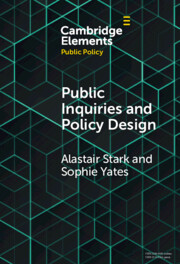Element contents
Public Inquiries and Policy Design
Published online by Cambridge University Press: 06 February 2024
Summary
- Type
- Element
- Information
- Series: Elements in Public PolicyOnline ISBN: 9781009286879Publisher: Cambridge University PressPrint publication: 23 May 2024
References
- 3
- Cited by

